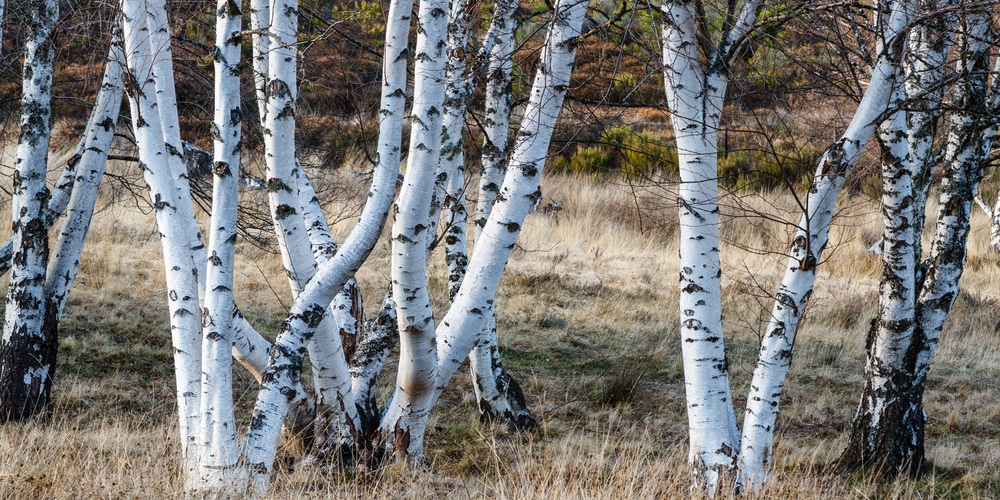Growing birch trees in Texas may not make sense, as the state has a warm climate that can be too hot for the cold-loving tree.
However, there is one birch tree that’s native to Texas- the river birch. In choosing the birch tree you wish to plant, it’s best to follow USDA zone requirements. These are the four best varieties you can grow:
4 Best Birch Trees to Grow in Texas
River Birch
River birch or Betula nigra is native to Texas and can be found in streams and rivers around the eastern part of the state. It’s the best option if you want to grow birch in your Texas yard and gain a beautiful addition to your garden.
The River birch is also called black birch or red birch. The deciduous tree usually sports multiple trunks that are relatively low to the ground and paper-like bark that ranges from brown with gray spots to chocolate brown interspersed with light pink shading.
The foliage is dark green and has serrated edges- you get a shower of gold when the leaves turn yellow during the fall season.
Because they’re native to Texas you will have very little trouble growing river birch to full size. You can opt for heat-tolerant cultivars that are well-suited to Texas’ hot summer days and warm climate.
Also, both Southern and Northern Texas gardeners should be able to plant them.
The key to growing River Birch is to put the tree where it gets full sun and in loamy, well-draining soil. In addition, the ground must be cool and moist to emulate its environment in the wild.
You can add mulch to help lower the temperature and retain moisture.
Bog Birch
A medium-sized and short-lived birch variety, Bog Birch grows like a shrub instead of a tree and it loves getting its feet wet. The tree’s common name should give you a clue as to how you should set up its environment.
Bog birch grows best in USDA zones 2 through 9. In general, Texas is within zones 6 to 9 so it should be able to survive. Because it has a shallow root system it’s not recommended that you plant your bog birch where it gets a lot of foot traffic. Mulch is a necessity so you won’t have to water your bog birch so often.
This birch tree species is somewhat hardy in that it can tolerate salt, alkaline soil, and occasional flooding. Betula pumila has dark shiny green leaves that turn into different shades of red and orange when fall comes around.
Dwarf Birch
A small variety that can be planted in containers, Betula nana only grows to around 3 feet tall. The shrub is native to cool regions but you can bring it indoors during summer to give it a chance to survive.
Dwarf birch grows in zones 1 to 8 and needs full sunlight to produce thick foliage. Surprisingly, the tree grows well even when the soil is rocky and has very little nutrient content. Mulch can offset the cold ground requirement and thus allow you to put the tree where it can get natural light throughout the day.
Betula nana will have green mint-like leaves attached to numerous stems, but when fall comes the foliage quickly turns orange with tinges of red. Southern Texas gardeners will have a better chance at successfully growing the dwarf birch compared to their northern counterparts.
Silver Birch
Silver birch can grow in zones 2 through 7 and in warm temperate regions. In Texas, the tree will grow best in the southern region where there are lower temperatures, which means northern Texas homeowners and landscapers are out of luck.
Silver birch, like its other birch counterparts, does not need a lot of nutrients. However, it’s very picky when it comes to ground temperature and how much sunlight it gets. The best growing condition for the tree is partial shade from the afternoon sun and low pollution areas.
Once settled and established, you can marvel at the silver birch’s smooth, copper brown bark and its stark contrast with the dark green foliage.
When fall arrives, prepare yourself for a blazing yellow shower of color-transformed leaves. Silver birch is often preferred over European white birch due to its greater resistance to birch borers.
Related Article: Birch Tree Fertilizer


